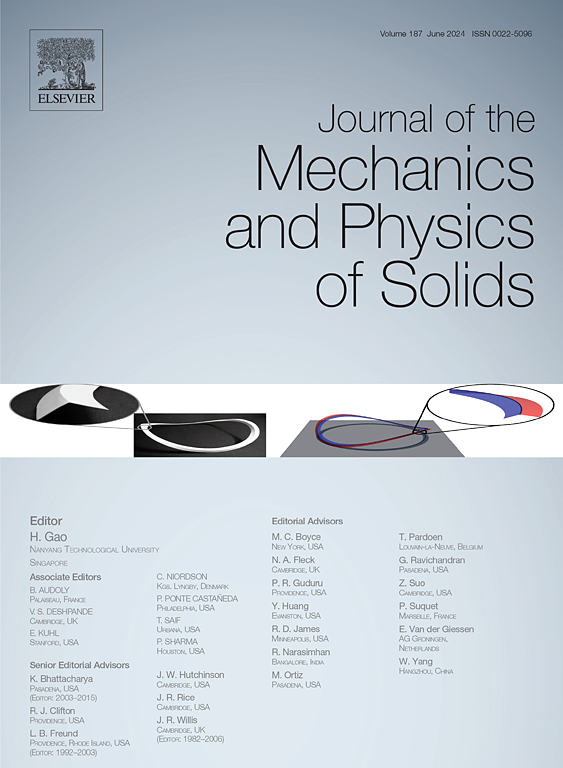实时仿真实现了磁性软连续体机器人在受限腔内的导航控制
IF 6
2区 工程技术
Q2 MATERIALS SCIENCE, MULTIDISCIPLINARY
引用次数: 0
摘要
磁性软连续体机器人(MSCRs)已经成为一种有前途的微创干预技术,提供增强的灵活性和在受限腔内的远程控制导航。与传统导丝的预先成形的尖端不同,mscr的特点是磁性尖端在外加磁场下主动弯曲。尽管在建模和仿真方面进行了广泛的研究,但在受限腔内实现mscr的实时导航控制仍然是一个重大挑战。主要原因是由于机器人-腔体接触相互作用和磁驱动下MSCR非线性行为建模的计算限制。现有的方法,如有限元法(FEM)模拟和能量最小化技术,都存在计算成本高和接触相互作用过于简化的问题,这使得它们在实际应用中不切实际。在这项工作中,我们开发了一个实时仿真和导航控制框架,该框架将在离散微分几何(DDG)框架内制定的硬磁弹性杆理论与降阶接触处理策略相结合。我们的方法可以捕获大变形和复杂的相互作用,同时保持计算效率。其次,将导航控制问题转化为一个逆设计任务,通过最小化约束力,提高导航精度,实时计算出最优磁场。我们通过全面的数值模拟和实验研究验证了所提出的框架,证明了其鲁棒性,效率和准确性。结果表明,我们的方法在保持高保真建模的同时显著降低了计算成本,使其能够在临床环境中实时部署。我们的工作解决了MSCR导航控制的关键限制,为MSCR技术在介入手术中更安全、更可靠的临床转化铺平了道路。本文章由计算机程序翻译,如有差异,请以英文原文为准。

Real-time simulation enabled navigation control of magnetic soft continuum robots in confined lumens
Magnetic soft continuum robots (MSCRs) have emerged as a promising technology for minimally invasive interventions, offering enhanced dexterity and remote-controlled navigation in confined lumens. Unlike conventional guidewires with pre-shaped tips, MSCRs feature a magnetic tip that actively bends under applied magnetic fields. Despite extensive studies in modeling and simulation, achieving real-time navigation control of MSCRs in confined lumens remains a significant challenge. The primary reasons are due to robot–lumen contact interactions and computational limitations in modeling MSCR nonlinear behavior under magnetic actuation. Existing approaches, such as Finite Element Method (FEM) simulations and energy-minimization techniques, suffer from high computational costs and oversimplified contact interactions, making them impractical for real-world applications. In this work, we develop a real-time simulation and navigation control framework that integrates hard-magnetic elastic rod theory, formulated within the Discrete Differential Geometry (DDG) framework, with an order-reduced contact handling strategy. Our approach captures large deformations and complex interactions while maintaining computational efficiency. Next, the navigation control problem is formulated as an inverse design task, where optimal magnetic fields are computed in real time by minimizing the constrained forces and enhancing navigation accuracy. We validate the proposed framework through comprehensive numerical simulations and experimental studies, demonstrating its robustness, efficiency, and accuracy. The results show that our method significantly reduces computational costs while maintaining high-fidelity modeling, making it feasible for real-time deployment in clinical settings. Our work addresses key limitations in MSCR navigation control, paving the way for safer and more reliable clinical translation of MSCR technology for interventional surgeries.
求助全文
通过发布文献求助,成功后即可免费获取论文全文。
去求助
来源期刊
CiteScore
9.80
自引率
9.40%
发文量
276
审稿时长
52 days
期刊介绍:
The aim of Journal of The Mechanics and Physics of Solids is to publish research of the highest quality and of lasting significance on the mechanics of solids. The scope is broad, from fundamental concepts in mechanics to the analysis of novel phenomena and applications. Solids are interpreted broadly to include both hard and soft materials as well as natural and synthetic structures. The approach can be theoretical, experimental or computational.This research activity sits within engineering science and the allied areas of applied mathematics, materials science, bio-mechanics, applied physics, and geophysics.
The Journal was founded in 1952 by Rodney Hill, who was its Editor-in-Chief until 1968. The topics of interest to the Journal evolve with developments in the subject but its basic ethos remains the same: to publish research of the highest quality relating to the mechanics of solids. Thus, emphasis is placed on the development of fundamental concepts of mechanics and novel applications of these concepts based on theoretical, experimental or computational approaches, drawing upon the various branches of engineering science and the allied areas within applied mathematics, materials science, structural engineering, applied physics, and geophysics.
The main purpose of the Journal is to foster scientific understanding of the processes of deformation and mechanical failure of all solid materials, both technological and natural, and the connections between these processes and their underlying physical mechanisms. In this sense, the content of the Journal should reflect the current state of the discipline in analysis, experimental observation, and numerical simulation. In the interest of achieving this goal, authors are encouraged to consider the significance of their contributions for the field of mechanics and the implications of their results, in addition to describing the details of their work.

 求助内容:
求助内容: 应助结果提醒方式:
应助结果提醒方式:


